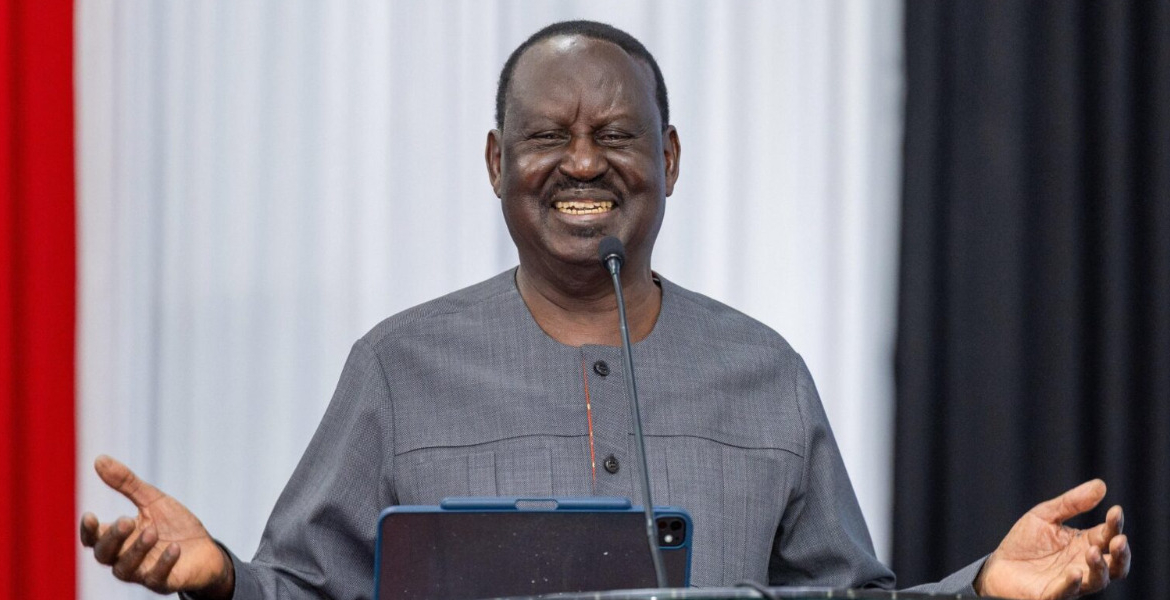Raila Odinga Urges Luo Community to Rethink Goyo Dala for Modern Housing

Former Prime Minister Raila Odinga is urging the Luo community in Kenya's Nyanza region to reconsider goyo dala, the longstanding tradition of building individual homesteads.
The practice, deeply ingrained in Luo culture, has historically represented a rite of passage for men, symbolising maturity, independence, and familial continuity. Young men would traditionally reside in a simba within their father's compound before establishing an independent homestead (goyo dala) on inherited land.
Speaking at a forum in Kisumu attended by local leaders, religious figures, and members of the Luo Council of Elders, Raila argued that the dispersed nature of these homesteads now hinders effective service delivery and sustainable land use. He advocated for a shift towards centralised, planned communities akin to those in South Korea and Singapore, where clustered living has improved access to infrastructure and urban amenities.
Odinga asserted, “What we must do as a community is reflect critically on goyo dala and embrace more dignified, modern housing…Our elders must initiate this dialogue. Let us learn from countries like South Korea, Malaysia and Singapore."
The core of Raila's argument centres on the unsustainable nature of traditional land subdivision. He contends that scattered settlements make it prohibitively expensive to provide essential services such as water, electricity, roads, and healthcare. With a growing population and shrinking land parcels due to generational inheritance, Raila describes the resulting rural landscape as evolving into "rural slums."
His vision involves integrated communities featuring clustered housing schemes with access to playgrounds, schools, clean water, and marketplaces within walking distance. Such models would preserve land for agriculture and alleviate the logistical burdens of service provision. Raila also cautions against unchecked land parcelling into tiny plots, citing it as a threat to broader development.
Odinga's proposal aligns with President William Ruto’s affordable housing initiative, which aims to establish inclusive and sustainable settlements nationwide. He has voiced support for the initiative, stressing the need for complementary investments in education, jobs, and healthcare to enable citizens to afford housing costs.
Victor Kanyaura, Kisumu County’s Chief Officer for Physical Planning, Housing and Urban Development, supported Odinga's position. Kanyaura pointed to consolidated worker housing on tea estates in Kericho as an example of streamlined infrastructure delivery.
He observed that communal living reduces costs and enhances cultural cohesion through shared meals and closer proximity. Kanyaura also criticised the trend of subdividing plots into small parcels, arguing that such fragmentation impedes large-scale development and undermines long-term urban planning.
“Muslims already practise this model, and it works,” Kanyaura noted.
However, critics have raised concerns about potential overcrowding in clustered housing, particularly given Kenya’s rapid population growth. Balancing density with quality of life remains a significant challenge, especially in semi-rural areas with established land ownership patterns. Despite these reservations, there appears to be growing support for the concept within the Luo leadership. Ker Odungi Randa, chairman of the Luo Council of Elders, conveyed confidence in the proposed shift, noting that even those in remote villages are increasingly recognising its benefits.
Randa stated, “Many people have embraced this, including prominent members of our community.”
He suggested that multi-storey family dwellings within shared compounds could strike an ideal balance between independence and communal living. The evolving debate highlights the complex interplay between cultural preservation.








Add new comment